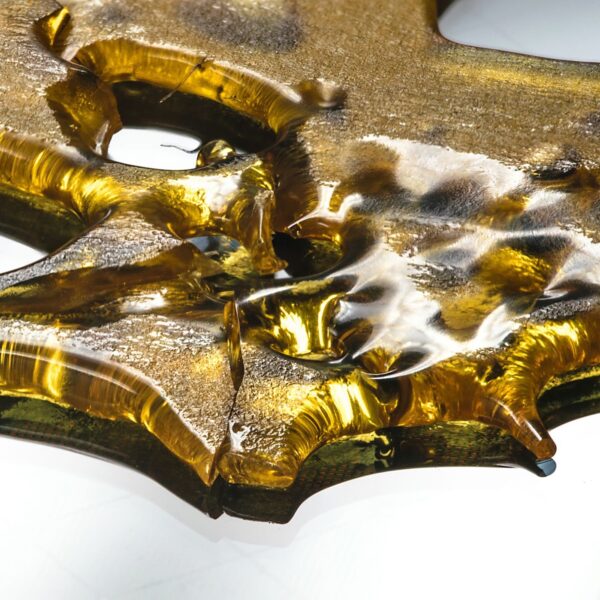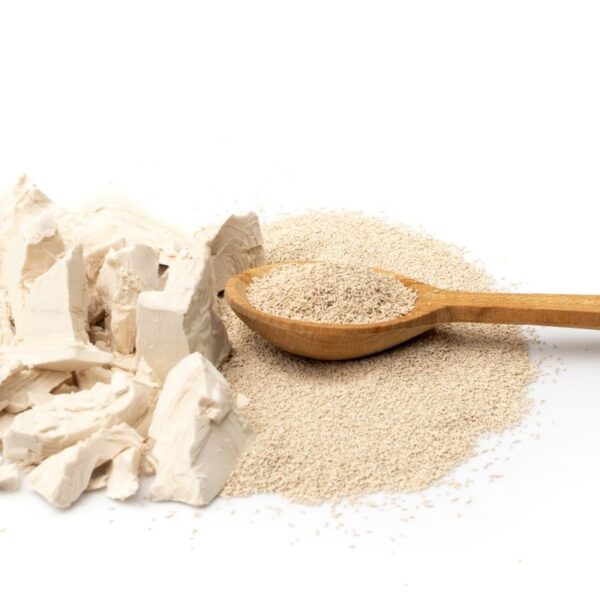Threonine is an amino acid that is used in the biosynthesis of proteins. Because it plays a pivotal rile in protein synthesis, metabolism regulation, and nutrient absorption, threonine is commonly used in supplements and nutraceuticals. This article delves into the intricacies of threonine production, its uses, and its growing prominence in the world of nutraceuticals.
What is Threonine?
Threonine is an essential amino acid. The human body does not naturally produce these acids, so it must obtain them from food. Out of the 20 proteinogenic amino acids, threonine was the last to be discovered in 1936 by William Cumming Rose, collaborating with Curtis Meyer. It was named threonine because it has a structure similar to threonic acid, a four-carbon monosaccharide with molecular formula C₄H₈O₅. There are four possible stereoisomers of threonine, namely (2S,3R), (2R,3S), (2S,3S) and (2R,3R). However, L-threonine is used for one single stereoisomer (2S,3R)-2-amino-3-hydroxybutanoic acid.
Threonine consists of an α-amino group (which is in the protonated −NH+3 form under biological conditions), a carboxyl group (which is in the deprotonated −COO− form under biological conditions), and a side chain containing a hydroxyl group, making it a polar, uncharged amino acid. The chemical formula for threonine is C₄H₉NO₃.
Source: Wikipedia
Threonine plays crucial roles in various physiological processes. It is important for protein synthesis and is a component of structural proteins like collagen and elastin, key skin and connective tissue components. Threonine also plays a significant role in fat metabolism and immune function.
How is Threonine Produced?
L-threonine is produced by fermentation of strains of the family Enterobacteriaceae, in particular Escherichia coli. Continuous efforts have been made to optimize the fermentation process by modulating the dissolved oxygen concentration, modifying the nutrient medium, or even modifying the performance characteristics of the bacterium itself.
In one patent, a process is described for preparing L-threonine using strains of the family Enterobacteriaceae in which, after performing fermentation in a fed-batch process, the fermentation broth is drained down to 1-90 volume %. The remaining fermentation broth is topped up with a growth medium, and, preferably after a growth phase, the fed-batch process mentioned performs a further fermentation step. This process may be repeated several times and is called a repeated fed-batch process.
Uses and Applications of Threonine
In the food industry, L-threonine is used as a nutritional supplement. Threonine is an essential bioactive molecule that has vital mediation effects on protein synthesis, energy metabolism, and nutrient absorption. It serves as a substrate for the production of mucin.
Since threonine is an essential amino acid, it is used as a dietary supplement in the nutrition industry. It plays a significant role in protein synthesis, regulating metabolism and nutrient absorption. It also plays a crucial role in forming connective tissues like collagen and elastin.
Product Examples
Threonine can be found in nutraceuticals, dietary supplements, and nutrient premises:
| Market | Dosage Form |
| Dietary Supplements | Capsules, Tablets, Drops, Syrups |
Properties of Threonine
| Chemical Formula | C4H9NO3 |
| Molar Mass | 119.120 g·mol−1 |
| Solubility in Water | (H2O, g/dl) 10.6(30°),14.1(52°),19.0(61°) |
| Acidity (pKa) | 2.63 (carboxyl), 10.43 (amino) |
| Density | 1.3±0.1 g/cm3 |
| Melting Point | 228–270ºC (dec.) |
| Boiling Point | 345.8°C |
Typical Formulations
L-threonine is used in various nutraceutical capsules, gummies, syrups, and other multivitamins and minerals. A few examples of formulations using threonine are given below:
Essential Amino Acid and Multivitamin Syrup
Here is an example formulation of essential amino acid and multivitamin syrup:
| Agent | Composition |
| L-Leucine | 18.3 mg |
| L-Isoleucine | 5.9 mg |
| L-Lysine Hydrochloride | 25.0 mg |
| L-Phenylalanine | 5.0 mg |
| L-Threonine | 4.2 mg |
| L-Methionine | 9.2 mg |
| L-Tryptophan | 5.0 mg |
| L-Valine | 6.7 mg |
| Thiamine Hcl | 5.0 mg |
| Riboflavin | 3.0 mg |
| Pyridoxine Hcl | 1.5 mg |
| Nicotinamide | 25 mg |
| Calcium Pantothenate | 5.0 mg |
| Cyanocobalamin | 2.5 mcg |
| Folic Acid | 0.75 mg |
| Ascorbic Acid | 40 mg |
| Vitamin A (synthetic retinol Concentrate oily form) | 2500 IU |
| Cholecalciferol | 200 IU |
| Alpha Tocopheryl Acetate | 7.5 IU |
Source: TilHealthcare
Essential Amino Acid and Multivitamin Capsule
Here is an example formulation of essential amino acids and multivitamin capsule:
| Agent | Composition |
| L-Leucine | 18.3 mg |
| L-Isoleucine | 5.9 mg |
| L-Lysine Hydrochloride | 25.0 mg |
| L-Phenylalanine | 5.0 mg |
| L-Threonine | 4.2 mg |
| L-Methionine | 9.2 mg |
| L-Tryptophan | 5.0 mg |
| L-Valine | 6.7 mg |
| Thiamine Hcl | 5.0 mg |
| Riboflavin | 3.0 mg |
| Pyridoxine Hcl | 1.5 mg |
| Nicotinamide | 25 mg |
| Calcium Pantothenate | 5.0 mg |
| Cyanocobalamin | 2.5 mcg |
| Folic Acid | 0.75 mg |
| Ascorbic Acid | 40 mg |
| Vitamin A (synthetic retinol Concentrate oily form) | 2500 IU |
| Cholecalciferol | 200 IU |
| Alpha Tocopheryl Acetate | 7.5 IU |
Threonine Formulation Considerations
Stability Profile of Threonine
According to a study by R. J. C. Lima and team, the thermal expansion stability of L-threonine is correlated with the strengths of local hydrogen bonding in the amino acid structures at room temperature. L-threonine crystals are dominated by strong O–H–O hydrogen bonds (2.660 A˚). In another experiment, it was also reported that the influence of hydrogen bond interactions between zwitterions related to the problem of molecular dynamics of ammonium groups (–NH3 +) in L-threonine under high-pressure conditions.
Biological Activity of L-Threonine
L-threonine maintains protein balance in the body. It is essential for forming collagen, elastin, and tooth enamel and aids liver and lipotropic function when combined with aspartic acid and methionine. L-threonine is a precursor to the amino acids glycine and serine. It acts as a lipotropic compound in controlling fat build-up in the liver. It may help combat mental illness and be helpful in indigestion and intestinal malfunctions. Also, threonine prevents excessive liver fat. Nutrients are more readily absorbed when threonine is present. Adult humans require about 20 mg/kg body weight/day.
Sensory Attributes
Threonine used in dietary supplements are known to have a sweet taste and typically has a pleasant curry-like, spicy odor.
Dosage and Solubility
The appropriate dosage for threonine can depend on various scenarios like the user’s age, health, type of disorder, and several other conditions. There needs to be more scientific inquiry to determine an appropriate range of doses for threonine. For example, for a specific movement disorder due to spinal cord damage (spinal spasticity), 6 grams of threonine per day.
Threonine belongs to a group of polar hydrophilic amino acids, and it is well-soluble in water and hardly soluble in ethanol.
Stereoisomers of Threonine
Threonine has two chiral centers, therefore a total of four stereoisomers. They are L-threonine, D-threonine, L-allo-threonine, and D-allo-threonine. The isomers other than L-threonine are rare and have no nutritional value.
Safety and Regulatory Considerations
| Regulatory Body | Status |
| FDA Information | Threonine for use in dietary supplements is FDA-approved and Generally Recognised as Safe. |
| EU Information | Threonine produced from Escherichia coli is EU-approved for use in dietary supplements. The European Food Safety Authority concluded in its opinions dated 5 July 2017 and 4 October 2019 that, under the proposed conditions of use, L-threonine produced by Escherichia coli CGMCC 11473 does not harm consumer health or the environment. |
Health Effects of Threonine
As an essential amino acid, threonine plays multiple vital roles in the human body. Here are some of its health effects:
Protein Synthesis
Threonine is crucial for protein synthesis in the body. It is a part of many proteins, which are the building blocks of the body’s tissues. Adequate levels of threonine are essential for proper muscle growth and function.
Immune System Support
Threonine helps produce antibodies and immune system cells, which are essential to the body’s immune response. It’s important for the formation of a protein known as immunoglobulin, which is integral to the functioning of the immune system.
Support for Connective Tissues
Threonine supports the health of connective tissues, skin, and teeth. It helps produce collagen and elastin, essential for skin elasticity and integrity. These proteins also support the health of tendons, ligaments, and cartilage.
Nutrient Absorption
Threonine helps with the efficient absorption of nutrients in the digestive system. It helps maintain and function the gastrointestinal tract, making it essential for digestive health.
CNS Function and Mental Health
Threonine is also thought to be involved in central nervous system (CNS) function. It is a precursor to the amino acids glycine and serine, neurotransmitters. Some studies have investigated its potential benefits in conditions like depression, but the evidence is inconclusive.
Liver Function
In conjunction with aspartic acid and methionine, threonine acts as a lipotropic, aiding in fat digestion and preventing fatty liver disease. It supports overall liver function and detoxification processes.
Support in Medical Conditions
Threonine is sometimes considered a supportive therapy for conditions like multiple sclerosis, familial spastic paraparesis, and Lou Gehrig’s disease (amyotrophic lateral sclerosis). However, the scientific evidence to support these uses wholly is lacking.
Wound Healing
Threonine plays a role in wound healing through its involvement in collagen formation. This makes it beneficial for post-surgical recovery and healing of injuries.
Identification Numbers
| Chemical Name | Threonine |
| CAS Number | D-Threonine: 632-20-2, L-Threonine: 72-19-5 |
| REACH Registration Number | It is not required to list the identified uses because the substance is not subject to registration according to REACH (< 1 t/a). |
| EC Number | 200-774-1 |
| JECFA Number | L-Threonine- 2119 |
| FEMA Number | L-Threonine- 4710 |
| CA Index Name | L- Threonine, D-Threonine |
Fun Facts About Threonine
- Threonine is named after its structural similarity to threonic acid. Its name has Greek origins, derived from “threon,” which means “sweet.”
- Threonine is known to have a sweet taste. This characteristic is not common to all amino acids.
- In the agriculture industry, threonine is an important component of poultry feed. It’s essential for the growth and health of birds, especially chickens.
- Threonine serves as a precursor to other amino acids like glycine and serine, making it an end product and a starting point for other essential molecules in the body.
- One of the lesser-known roles of threonine is its involvement in mucin production in the gut. Mucins are vital for protecting the gut lining and facilitating the smooth passage of food.
Additional Resources
- NCBI Article PMC8399342
- Threonine – Wikipedia
- Threonine: Uses, Side Effects, Interactions, Dosage, and Warning – WebMD
- Patent US20070092950A1
- US Patent US6562601 PDF
- Threonine Benefits, Foods High in Threonine & More – Dr. Axe
- Til Healthcare Nutraceutical List
- Drug DB00156 – DrugBank
- Nature Article 1731092a0
- Threonine Supplements – RxList
- Threonine Molecule of the Week – ACS
- CFR Title 21 Section 582.5881 – FDA
- EUR-Lex Document 32020R1091









